Key Contributions
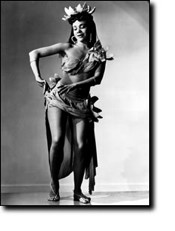
Katherine Dunham was a dancer, a choreographer, a serious anthropologist and scholar, an unwavering political activist, and a glamorous beauty. She uncovered authentic African American culture and completely dispelled the Zip Coon stereotype, which conveyed the idea that African Americans cannot be educated. She daringly challenged and charmed audiences. Fueled with passion, intelligence, and love for humanity, her actions continuously conveyed her values of education, awareness, art, and equality.
The Katherine Dunham Technique
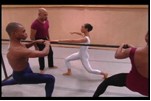
By offering her researched knowledge of authentic African American culture, Dunham was a key contributor to modern dance. She developed the Katherine Dunham Technique, which includes African and Caribbean styles of movement—a flexible torso and spine, articulated pelvis, isolation of the limbs, and a polyrhythmic strategy of moving—that she fused with ballet technique. The development of the Katherine Dunham Technique dispelled the notion that African Americans are unsuited to learn ballet.
Scholarly Contributions
Not only did her passion for anthropology and African-American history arrive in the form of dance, but they were also conveyed in Dunham’s numerous publications regarding African religions and rituals adapted to the New World. Dunham also lectured and wrote three books about her observations: Journey to Accompong, The Dances of Haiti, and Island Possessed.
African American Modern Dance
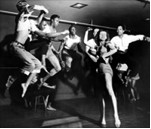
In 1937, Katherine Dunham founded the Negro Dance Group, a company of black artists who were dedicated to present aspects of African-American and African-Caribbean dance. Lead by an extremely capable woman, Dunham’s dance group was able to thrive without government funding.
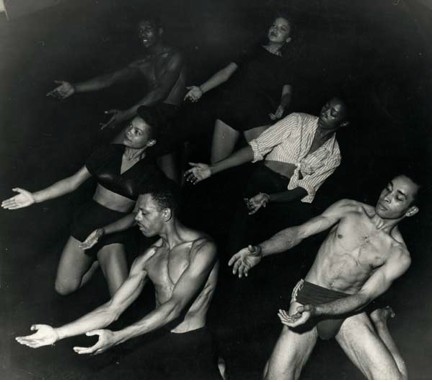
A group of Katherine Dunham dancers shown in mid-rehearsal of the classical ballet, "Mozart's Sonata in D Major"
In 1945, Dunham opened the Dunham School of Dance and Theater, also known as the Dunham School of Arts and Research. Staying true to her values, Dunham’s school not only offered technique classes, but it also offered courses in humanities, philosophy, languages, aesthetics, drama, and speech. Renowned dancers such as Talley Beatty attended Dunham’s school. The Alvin Ailey studios also taught the Dunham technique.
Unwavering Political Activism
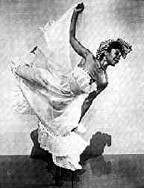
In the 1940s and ‘50s, Dunham made significant contributions as a political activist. She fought against segregation in hotels, restaurants, and theaters. She also filed lawsuits and bravely made public statements fighting for equality. When a producer wanted to replace some of her darker-skinned dancers, she refused to sign the lucrative studio contract that she was offered. Daringly, after a performance to an all-white audience in the South, Dunham announced that she would never play there again unless it was integrated. Dunham addressed her intolerance for segregation as she said, "It makes me very happy to know that you have liked us, but tonight our hearts are very sad because this is a farewell to Louisville. . . . I have discovered that your management will not allow people like you to sit next to people like us. I hope that time and the unhappiness of this war for tolerance and democracy . . . will change some of these things. Perhaps then we can return." Additionally, in Brazil, she filed a discrimination lawsuit against a hotel, which led to an apology of the president of Brazil and the passing of a law that forbade discrimination in public places. Katherine Dunham’s courage and integrity was undoubtedly unwavering.
Dunham was outspoken in her work as well, as she addressed controversial issues in her dances. The ballet Southland, depicted a lynching of a man who is falsely accused of raping a white girl. Although many people advised Dunham not to address such a controversial issue, Dunham boldly premiered the dance. The U.S. embassy requested that the ballet be removed from the program.
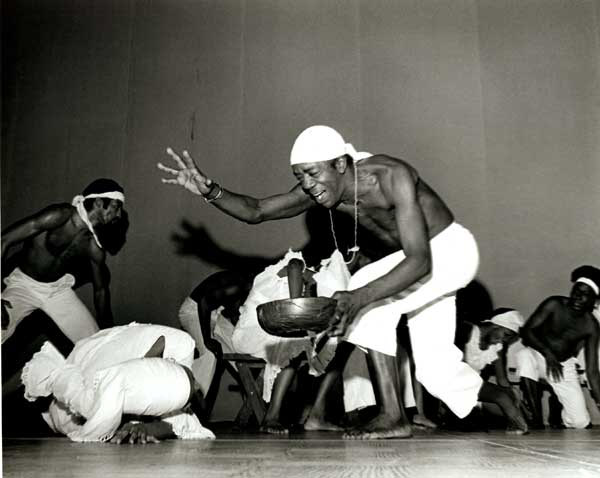
Cultural Programs
Performing Arts Training Center
In 1967, Dunham opened the Performing Arts Training Center, as a response to the deprivation in the ghettos of East St. Louis. The center was a cultural program and school for the neighborhood children, offering programs in dance, drama, martial arts, and humanities. Dunham later expanded the center to include programs for senior citizens.
The Katherine Dunham Museum and
Children’s Workshop
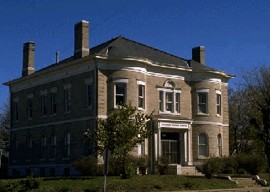
In 1977, she opened the Katherine Dunham Museum and Children’s Workshop to house her collections of artifacts from her travels, research, personal life, and career. Click here for a link to the museum. The museum contains costumes, photographs, programs, letters, awards, and mementos from her career. The museum not only celebrates African culture, but it also offers intensive training in Dunham technique and theory. The goals of Dunham’s center are to provide art-based communication techniques for people of diverse cultures and to offer a multi-arts training program to humanize and socialize individuals while providing them with marketable skills.
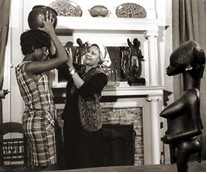
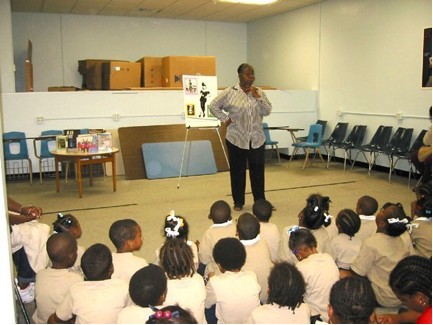
Strength and Integrity
At Every Stage of Life

In 1992, Dunham, who was 82 years old at the time, tirelessly continued her activism by participating in a 47-day fast to protest the United States’ deportations of Haitian boat-refugees fleeing to the U.S. after the military overthrow of Haiti’s President Jean-Bertrand Aristide. Dunham agreed to end her fast only after Aristide visited her and personally requested her to stop.
Awards
To recognize Katherine Dunham’s intellectual, artistic, and humanitarian contributions, she has been presented with the following prestigious awards:
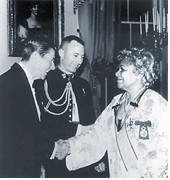
President Reagan honors Dunham on her 1983 Kennedy Honors Award.
Presidential Medal of Arts
Kennedy Center Honors
French Legion of Honor
Southern Cross of Brazil
Grand Cross of Haiti
NAACP Lifetime Achievement Award
Lincoln Academy Laureate
Urban Leagues’ Lifetime Achievement Award.
As an educator, anthropologist, dancer, choreographer, and human rights activist, Dunham truly honored her beliefs at every stage of her life. Her efforts and contributions were bold, relentless, and selfless.